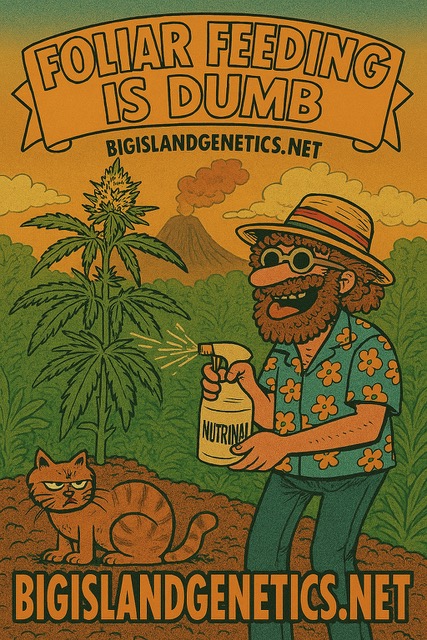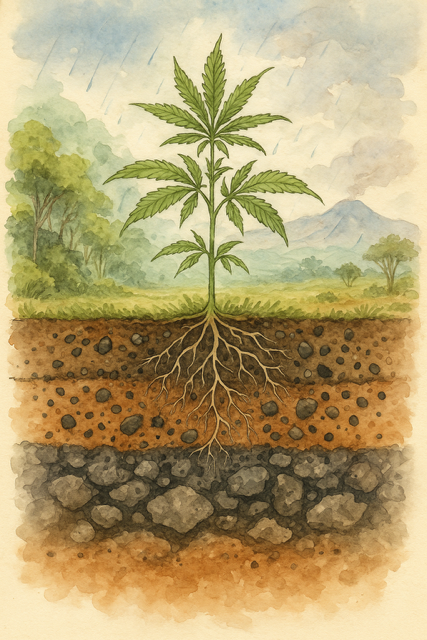
🌿 Foliar Feeding Is Dumb: Professor Potgrower calls it how he sees it
Let’s get this straight. Foliar feeding—spraying nutrients on your plant’s leaves—is one of those things that sounds smart until you actually understand how plants work. I’m Professor Potgrower, I live in Hawaii, I grow legacy-grade cannabis, and I’ve seen this myth float around long enough. Time to torch it.
🍃 What Foliar Feeding Claims to Do
Foliar feeding is the idea that you can spray nutrients directly onto the leaves and the plant will absorb them. Some folks even add surfactants to help the spray stick. They think it’s a shortcut to better growth, faster results, and fixing deficiencies.
But here’s the truth: leaves aren’t built to eat.
What Leaves Actually Do
Leaves are sugar factories. They take sunlight, carbon dioxide, and water, and crank out glucose through photosynthesis. That’s their job. They’re not designed to absorb nutrients—especially not macronutrients like nitrogen, phosphorus, or potassium.
Only a few micronutrients—like zinc, iron, and manganese—can be absorbed through the leaf surface, and even then, it’s in tiny amounts. The real nutrient uptake happens underground.
Roots Are the Feeders
Roots are where the magic happens. They’re built to absorb water and nutrients from the soil or hydroponic solution. That’s how your plant gets what it needs to grow, thrive, and produce those sticky buds you’re chasing.
If your plant has a deficiency—say, zinc—you fix it by feeding the roots. Not by misting the leaves like you’re seasoning a salad.
Foliar Feeding Wastes Time and Money
Let’s talk logistics:
– Time: You’ve got to mix the solution, spray during cool hours, avoid direct sun, and repeat regularly.
– Cost: Nutrient solutions, sprayers, surfactants—it adds up fast.
– Effectiveness: Studies show that 98–99% of foliar spray drips off the leaves and ends up in the soil.
– Risk: Too much salt on the leaves causes leaf burn—brown edges, scorched spots, and stunted growth.
What You’re Actually Spraying
Sometimes folks say, “Well, maybe I’m feeding the microbiome on the leaf surface.” Sure, maybe. But that’s not feeding your plant. That’s feeding the bugs and bacteria living on your plant. And unless you’re doing some advanced microbial foliar program, it’s not worth the effort.
When Spraying Does Make Sense
There’s only one good reason to spray your plants: protection.
– Organic pesticides
– Organic insecticides
– Organic fungicides
That’s it. You spray to keep pests off your plants—not to feed them.
Professor Potgrower’s Final Word
Plants don’t eat nutrients. They use nutrients to make sugar. And they do that through their roots—not their leaves. So unless you’re treating powdery mildew or chasing aphids, don’t waste your time, your money, or your nutrients on foliar feeding.
It’s dumb.
Sources
1. “Micronutrient Uptake via Foliar Feeding” – NCBI
2. “Foliar Absorption Limitations in Cannabis” – Maximum Yield
3. “Efficiency of Foliar Nutrient Application” – ScienceDirect
4. “Risks of Leaf Burn from Fertilizer Spray” – Gardening Know How






